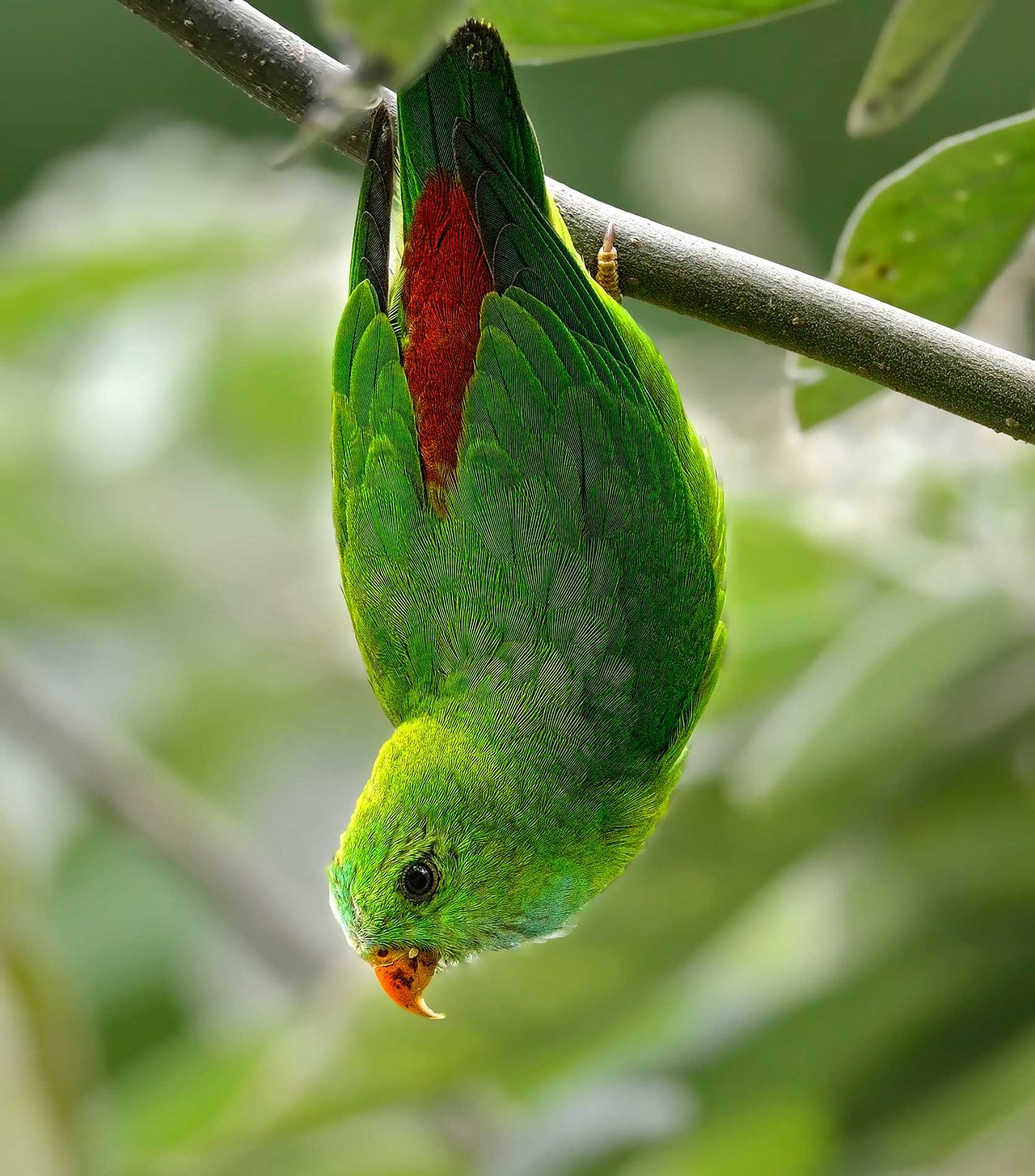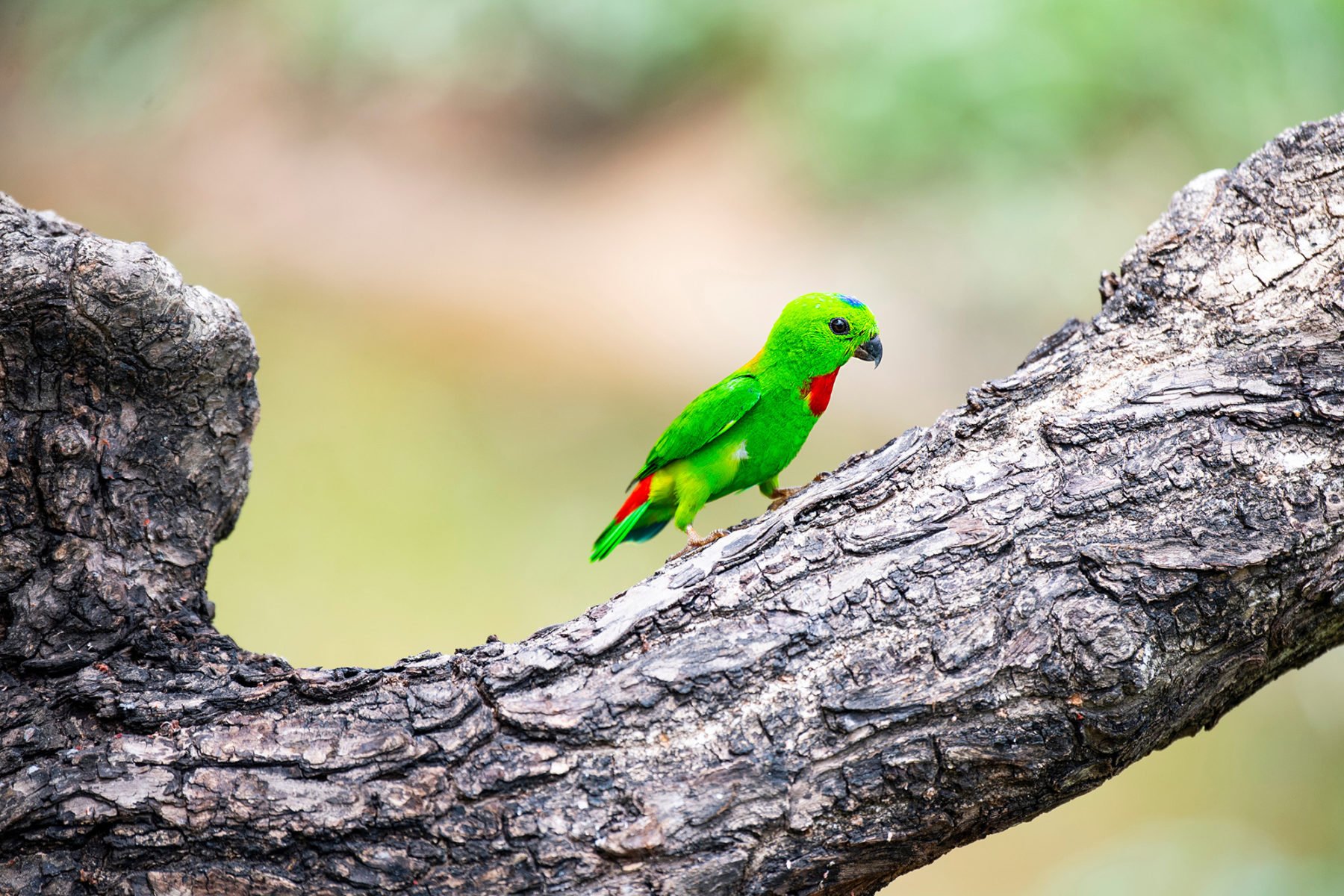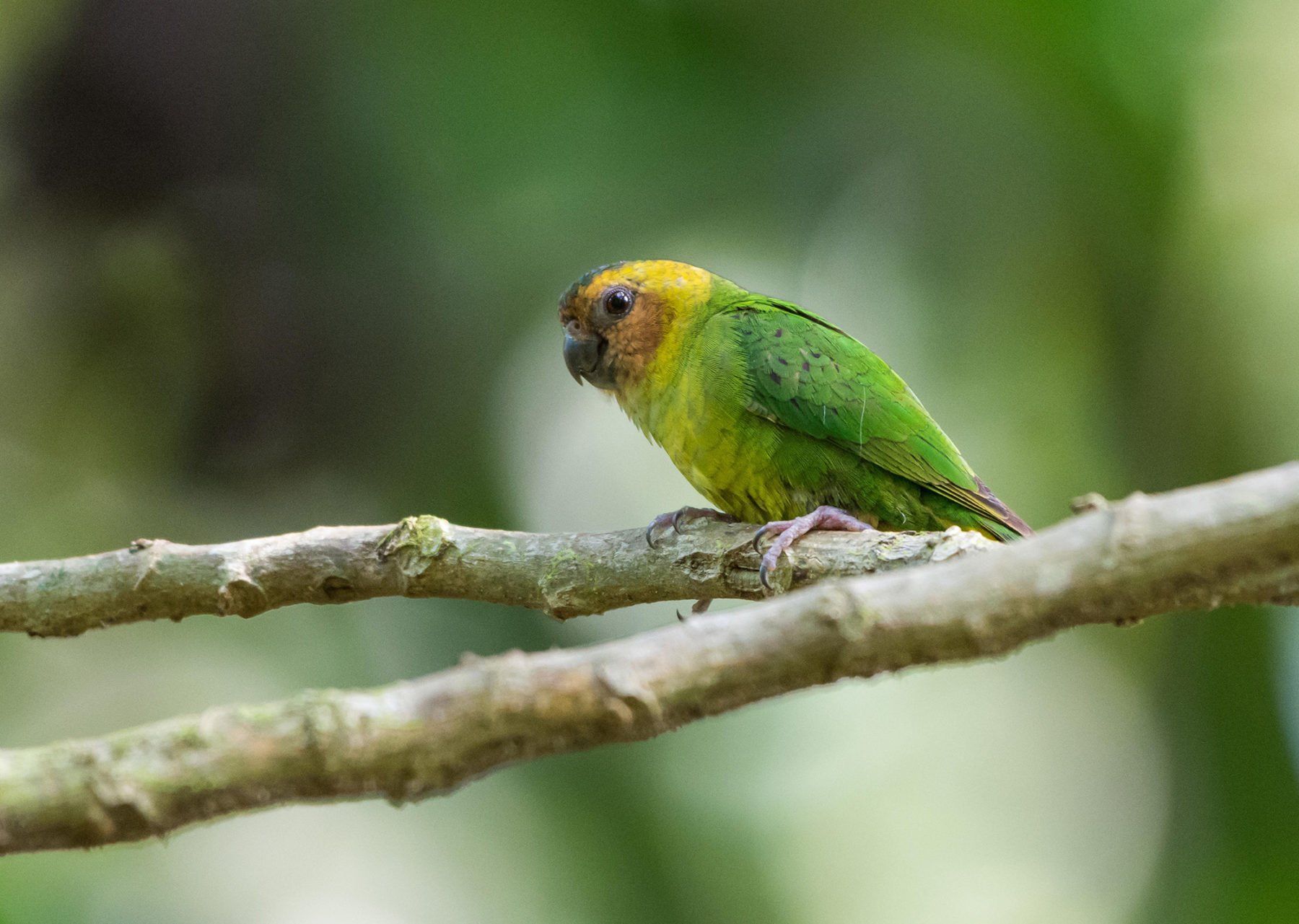This tiny hanging parrot is giving us life

Bec Crew
Bec Crew

Sometimes you have to look at a small creature and marvel at the fact that it can do everything a larger creature can do, but in a tiny, weeny body. How is that not the best?
Case in point: the hanging parrot, which at just 13 cm long, is a compact little critter.
Members of the genus Loriculus, the 14 known species of hanging parrots are spread throughout the forests of tropical southern Asia, in places such as Indonesia, New Guinea and the Philippines.
As their name suggests, they’re great at hanging upside-down by their feet. Like other parrots, they sometimes feed and bathe and chill out like this, but what makes hanging parrots super special is that they are thought to be one of the only birds that sleep like this.
It’s how they got their other name: bat parrots.

Exactly why hanging parrots evolved to do this is a bit of a mystery, but it could be because it obscures them from predators – a predator on the look-out for a little parrot meal might not register an upside-down one, hidden by foliage, as a target.
Experiments done with captive hanging parrots back in the 1960s supports the hypothesis that hanging upside-down could be an anti-predator strategy. Francine Buckley from Cornell University in New York noticed that new hanging parrots that didn’t know him yet would quickly hang upside-down in their cage and pretend to be sleeping whenever he came into the room.
Buckley also noticed that young and sick birds didn’t hang, which suggests that a fair amount of strength is needed to hold the body in that position – particularly when it comes to matters of hygiene.
When nature calls, hanging parrots grip onto a branch by a single foot, flip their tail back, and aim their droppings carefully, so they don’t immediately come back to haunt them.
Hanging parrot species are mostly bright green – the colours on their heads are the best way to tell them apart. The species pictured at the top of this page is the blue-crowned hanging parrot (Loriculus galgulus), found in southern Burma and Thailand, Malaya, Singapore and some islands of Indonesia.
Here’s another one, looking absolutely gorgeous, perched on a tree branch:

Like their close relatives, the fig parrots, which includes Australia’s smallest parrot, hanging parrots are tiny, but they’re not the tiniest parrots in the world.
The buff-faced pygmy-parrot (Micropsitta pusio), from parts of New Guinea and Papua New Guinea, takes that title. In fact, at less than 9cm long, it’s about the size of a hummingbird.

Here’s one feeding on lichen on the bark of a tree – part of a very particular diet that makes these birds practically impossible to keep in captivity, making them all the more intriguing:




